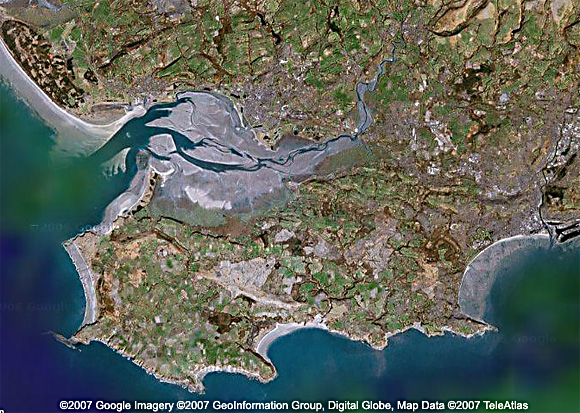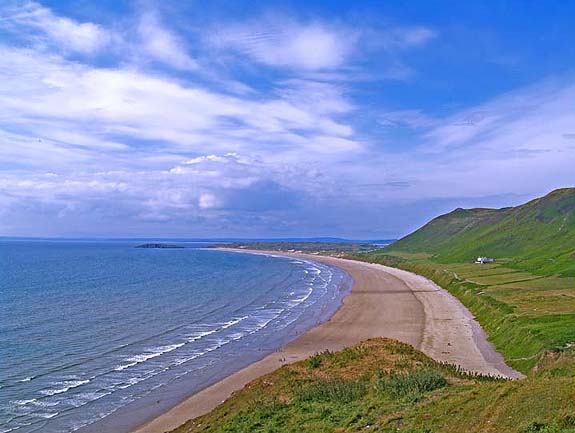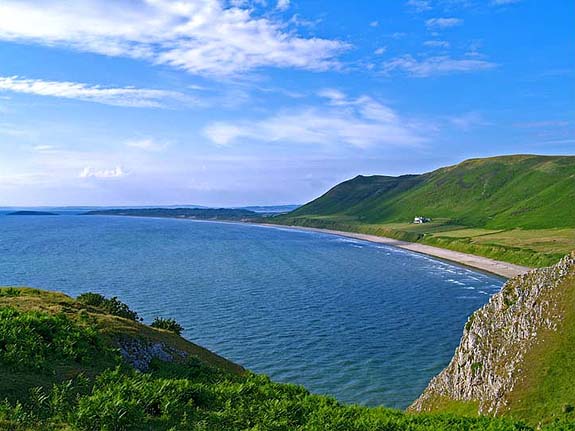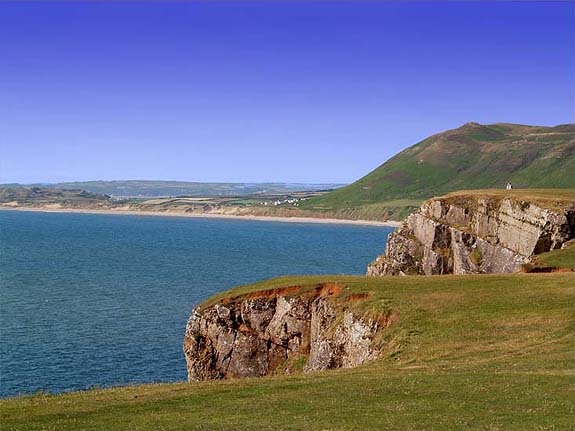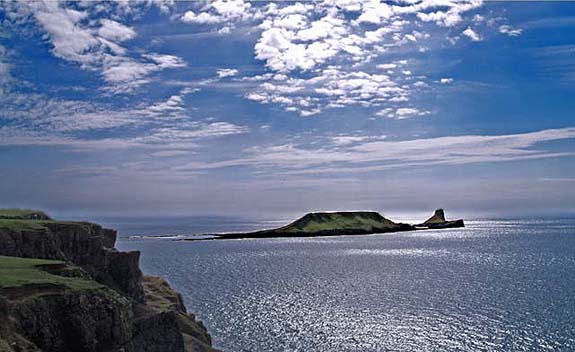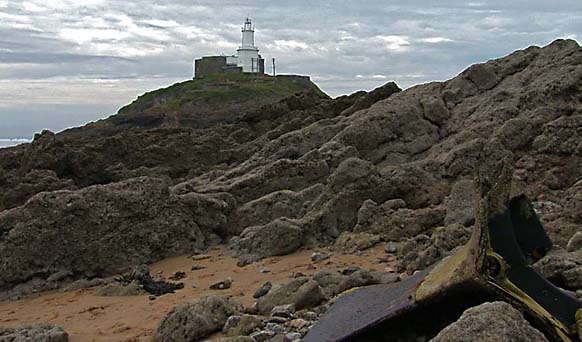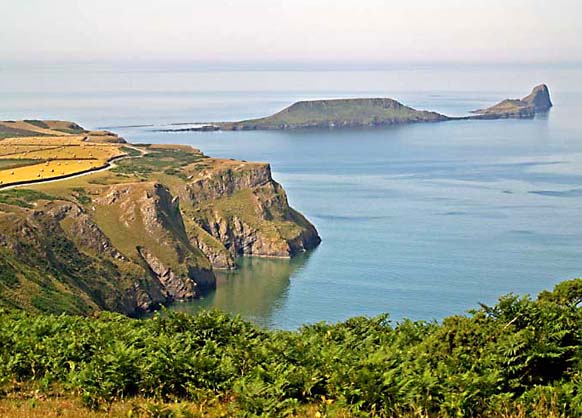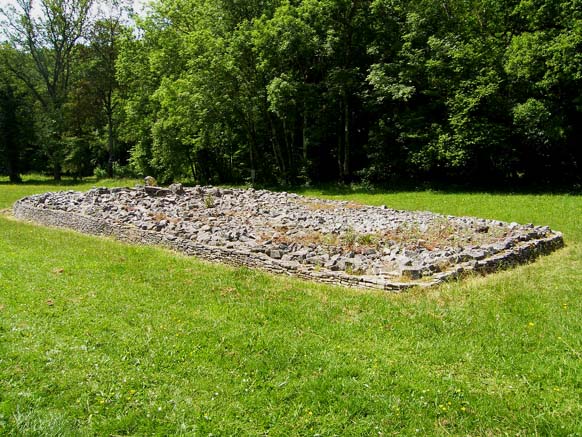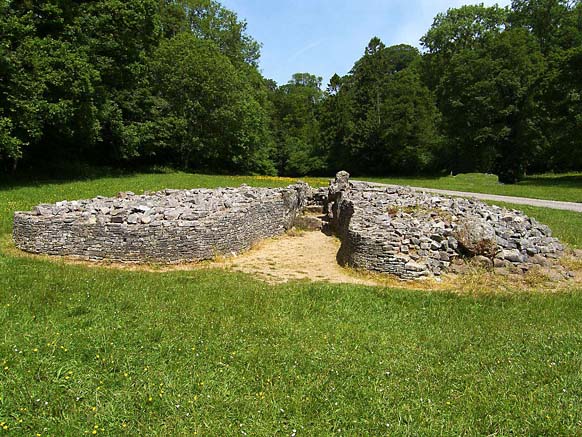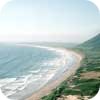
| The Gower Peninsula
The Gower Peninsula (Welsh: Gŵyr) is one of the UK's major tourist attractions and is the best-known district in Wales after Snowdonia. It was the first area in the British Isles to be designated an Area of Outstanding Natural Beauty.
About seventy square miles in area, Gower is known for its magnificent coastline, popular with walkers, the interior consisting mainly of farmland and common land. The nearest town of any size is Swansea, situated just to the east of the peninsula; on the peninsula itself, the population resides mainly in small villages, of which the best known include Rhossili, Pennard, Oxwich, Bishopston, Ilston, Parkmill and Kittle. The southern coast of the peninsula consists of a series of small rocky or sandy bays: Langland, Caswell, Three Cliffs, etc. At Paviland Cave on south Gower, a human skeleton (named the Red Lady of Paviland, though he is actually a male) was discovered by Victorian archaeologists, and has since been dated to an age of about 25,000 years.
The peninsula is bounded by Swansea to the east and the Loughor estuary to the north. The north-western section of the coast includes the famous cockle-beds of Penclawdd. Nowadays, Gower tends increasingly to be a favoured retreat for the retired and the wealthy. It is also extremely popular with holidaymakers.
Following the Norman occupation of Glamorgan, the lordship of Gwyr or Gower passed into English hands, and the western part subsequently became one of the most Anglicised regions of Wales. Villages in the north-east of the peninsula such as Penclawdd and Gowerton remained strongly Welsh-speaking until the middle of the Twentieth Century.
Economically, agriculture remains important to the area but tourism plays an increasing role in the working lives of the inhabitants. Low wages associated with these industries and the popularity of Gower as a retirement location has priced local housing out of the reach of the young people of the area.
Gower is home to several menhirs or "standing stones" from the Bronze Age. Of the nine stones, eight remain today.
|

